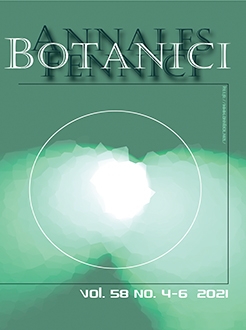In Scandinavia, three gradients (poor–rich, water table, margin–expanse) are considered in vegetation classification of mires. We re-analysed the data of Paavo Havas from 1961 on sloping fens in eastern Finland using NMDS ordination analysis, which also revealed a three-dimensional structure of the classic gradients, with the poor–rich gradient associated with pH. Water table level, and the unstable–stable water regime gradient were also of importance. Our analysis confirmed the interpretation by Havas but further stressed the role of the poor–rich gradient as the main direction of variation in sloping fens. Species richness increased with pH, and from mire expanse to margin vegetation, but decreased towards too wet or seasonally too dry conditions. Eastern Finnish sloping-fen plant communities resemble those in sloping fens elsewhere in Scandinavia, but also those in montane-subalpine-alpine fens in central and southeastern Europe.
BioOne.org will be down briefly for maintenance on 17 December 2024 between 18:00-22:00 Pacific Time US. We apologize for any inconvenience.
How to translate text using browser tools
21 June 2021
Gradients, Species Richness and Communities in Eastern Finnish Sloping Fens
Jarmo Laitinen,
Jari Oksanen,
Eero Kaakinen,
Tomáš Peterka,
Asbjørn Moen,
Teemu Tahvanainen
ACCESS THE FULL ARTICLE

Annales Botanici Fennici
Vol. 58 • No. 4-6
November 2021
Vol. 58 • No. 4-6
November 2021




